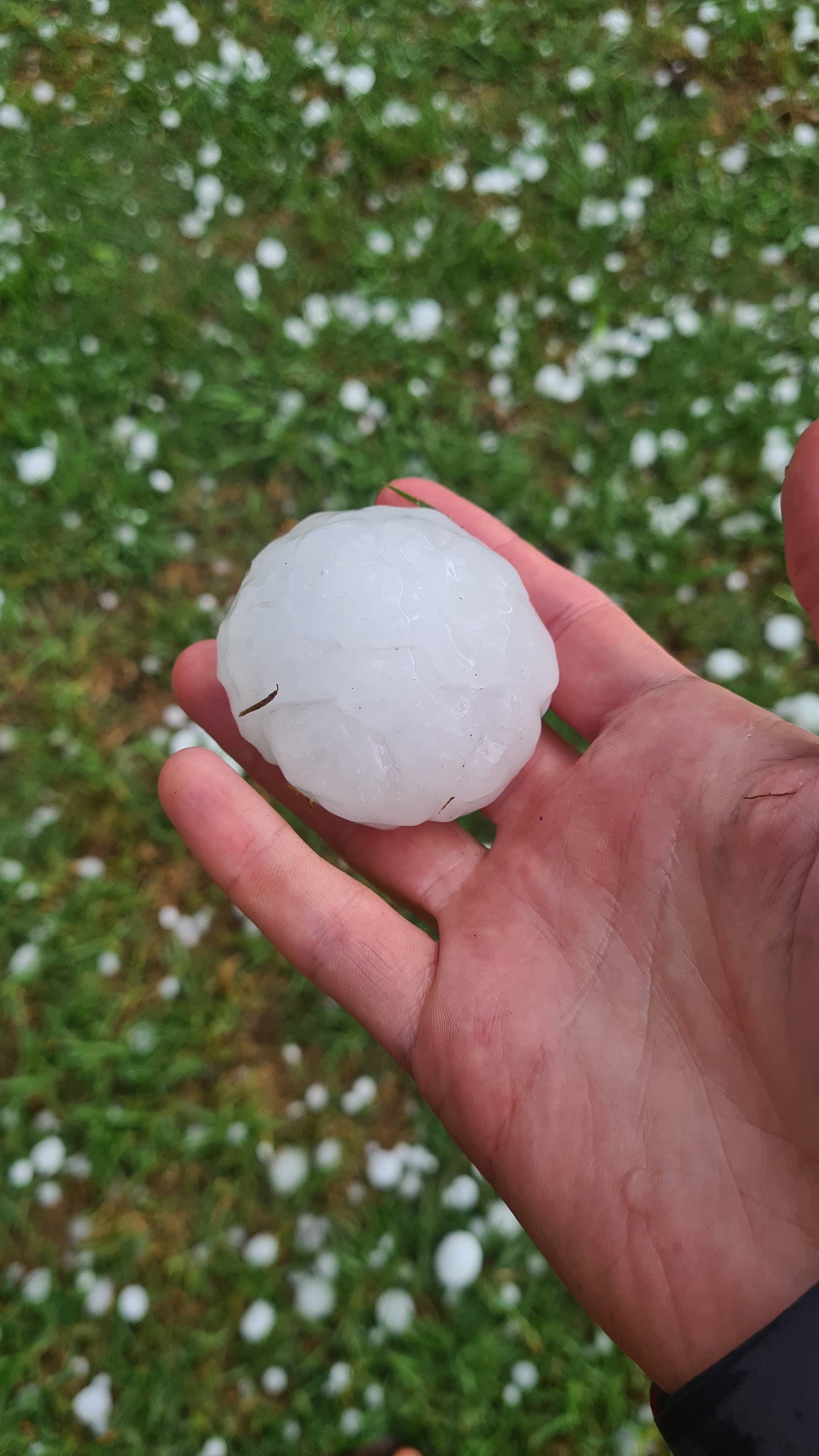Looks expensive. The grey ones are the broken ones.
All the people arguing for nuclear, are you sure Texas is best place to handle that? I’m fine with nuclear as long as they have a reasonable plan to store the waste, but Texas is horrible at managing anything energy related.
Tbh, I think America in general might be a little too obsessed with personal freedom for us to transfer the entire country over to nuclear energy.
Successful nuclear programs require actual collective work for long term viability. We would need to actually give administrative powers to an agency like the nuclear regulation commission that supercedes the authority of individual states.
Otherwise its just going to be like 30 years of ironing out NIMBY state legislation before anything gets built, just like the deep storage facility we’ve been “building” since the 80s.
Yeah. I’m not normally an anprim, but for Texas…
My 200W panel just got slammed camping over xmas and not a spot of damage on it—its made to have some sort of protection from hail strikes. Meanwhile the 4×4 got smashed windows and dents all over.

There’s a truck in my neighbourhood that was hit by hail. The owner repainted it, but left the dents. He has a little bumper sticker explaining what happened. It looks pretty amazing, IMO, and must be an awesome conversation starter.
It’s not uncommon where I live, but certainly starts conversations of people comparing their worst storms. My own favourite was the damage done to a massive carlot near the docks and airport that stored new cars coming into the country to freight out around the state. Thousands of cars, no cover. They all went on sale massively discounted as hail damaged but the downside being people couldn’t get additional non-compulsary insurance until repaired. So new car, but probably barely making a saving after fixing it all. Or, just leave it and o ly have compulsory insurance, which only covers damage you do to public property with your car and not your car or other people’s.
Wow that’s a huge hail ball! I get excited when they’re marble-sized.
It might have cracks in the silicon crystal that might burn in over time.
But yeah, impressive that it could take this big of hail balls without braking the glass.
Placing hardware cloth or similar over the panels with a couple inches of stand-off should prevent most any damage from even lege hail. It will probably reduce sunlight by a few percent across the entire field, but considering the storms Texas gets it would likely be worth it in the long run instead of having most of an entire farm wrecked.
But then Texas isn’t big on protecting their power sources from environmental impacts, are they.
How strong that cloth and attachment would need to be to survive gusts from a storm that’s capable of generating such big hail?
Hardware cloth is metal mesh, so any wind strong enough to remove it would have long since destroyed the panel it was attached to thanks to the surface area of the panel. The standoffs would probably need to be “L” tabs or similar arranged in a grid across the face of the panel. Heck, just erecting a screen over the entire field would probably be better and cheaper than doing individual panels, but a field-size cover would probably end up with needing higher strength posts to mount it because of the greater drag over surface area. That said, I’m not an engineer, so the most efficient and effective method of protection is going to have to come from someone with more knowledge than my guesswork.
Yeah, might want a metal grating/mesh or something instead. Should do better in the wind.
Hardware cloth is a metal mesh.
Wow. It was only after reading comments on this post until that I remembered WHY I was more than happy to leave Reddit behind. Too bad so many of these diseased children moved over here.
It took just one comment: ’ What is “4000ac”? ’ to start the drool-fest.
Has anyone investigated the consequences of all the sunlight that’s leaked into the environment because of this disaster? What sort of clean up are we looking at and how long will it take?
The problem when photon containment breaks like this is that we can never be 100% sure which photons were SUPPOSED to be there, and which ones leaked out. We’ll need a dedicated team of particle physicists with very small tweazers to have any hope of sorting out this mess.
The effect on the local goth population will be devastating.

Richmond! 🖤
Don’t tread on my private infrastructure!!
Should have put them underground.
Why didn’t they just cover them with metal sheets to protect them from the hail? Are they stupid?
Yeah why don’t they just build a roof over them?
What is “4000ac”?
4000 acre?
Americans inventing new freedom units instead of using squared meters…
Before the enactment of the metric system, many countries in Europe used their own official acres. In France, the traditional unit of area was the arpent carré, a measure based on the Roman system of land measurement. The acre was used only in Normandy (and neighbouring places outside its traditional borders), but its value varied greatly across Normandy, ranging from 3,632 to 9,725 square metres, with 8,172 square metres being the most frequent value.[clarification needed] But inside the same pays of Normandy, for instance in pays de Caux, the farmers (still in the 20th century) made the difference between the grande acre (68 ares, 66 centiares) and the petite acre (56 to 65 ca).[50] The Normandy acre was usually divided in 4 vergées (roods) and 160 square perches, like the English acre.
*Europeans invented the acre 1000 yeats ago
Before the enactment of the metric system
Yes… long before…
So backwards…
If by “Americans inventing” you mean “Europeans inventing” then yes
Non English Europeans aren’t savages who use non metric units. 🧐 Smh
Bitch it was the romans who “invented” most of the units.
And unless I see y’all adopting metric time in the near future I frankly don’t want to hear about how oh so stupid anyone who isn’t doing metric is.
Plus there’s just the idiocy of it being base 10 when base 36 is so much better, uses the whole keyspace of numerals and latin alphabet letters, “10” is a perfect square that’s the product of two other perfect squares, plus “10” has 9 factors, it has a number of factors equal to one of the perfect squares that it factors into!
It’s good when the people of eternal Rome use the old measurements, for they were the citizens of the coolest empire of our time.
It’s not good when the americant’s use it to measure screaming eagles per burger or something. 🧐
I’ll convert it to a metric unit for you so it’s easier to visualize: the solar farm is 2*10^27 square Angstroms.
Hope that helps!
That is actually helpful. It’s easy to convert from Angstroms (10^-10 m) to meters, to kilometers (10^3 m). That means it’s all just basic arithmetic. 27 - 2*(10 + 3) = 27 - 26 = 1. So, it’s 2*10^1 square km, or 20 square km.
Saladbar sneeze guard stonks to the moon!
(Because a hail size sneeze guard would have stopped hail size hail is the joke, you humorless fucks.)
Take your medicine.
Thanks Empricorn’s mom and or dad for such a clever, witty, original, child.
May this child one day bring you some value.
Okay, but if this was a nuclear power plant we’d have a second Fukushima on our hands.
Nuclear powerplants are so safe that they’ve only had a handful of (admittedly disastrous and high profile) failures, and have killed less people per watt hour generated than even wind and solar power. Nuclear power is the safest, cleanest, most efficient form of green energy we can get right now. Yes, it can be dangerous if not managed properly. But Fukushima, Chernobyl, and Three Mile Island were not freak accidents. Deliberate mistakes were made that were known at the time and should be used as warnings to keep the industry safe, not as sirens that lead is to swear off nuclear energy.
But Fukushima, Chernobyl, and Three Mile Island were not freak accidents.
Fukushima involved bad mistakes and a set of freak accidents. It was hit first by a the most powerful earthquake ever recorded in Japan and then by a tsunami.
Now sure, there are plenty of mistakes they made that seem obvious in hindsight. But, it’s fundamentally different from Three Mile Island and Chernobyl where the only causes were design and operational mistakes.
That is fair, I would call that a bit of perspective, bit not unfair perspective. Yes, it did take significant disasters to make the mistakes apparent, so who’s to say if anybody would’ve noticed or how much of a problem they would’ve been.
Yeah. In hindsight a nuclear power plant in a country with frequent earthquakes has to be hardened against earthquakes. Earthquakes can cause tsunamis so any plant on the coast has to be ready to handle tsunamis. Tsunamis come a while after earthquakes, so they have to be prepared for the double whammy of an earthquake with a tsunami just a short time later. And, to be fair, it’s not like they hadn’t thought of those things at all. It’s just that they made some design mistakes that seem obvious in hindsight.
But, it’s still significantly better than power plants that just melt down completely on their own due to incompetent design and incompetent operations, with no triggering natural disaster.
Removed by mod
This is officially the worst argument yet. Who cares about what some fake god thinks, we have to deal with our own very real issues around power generation and anthropogenic climate change.
Removed by mod
KenM, is that you?
Removed by mod
Utility scale photovoltaics just seems like a bad idea.
Why do you say so?
Because he’s paid to.
PV isn’t super efficient. It’s great on a rooftop because the space isn’t being used for anything else, but for grind-scale there are other solar options, such as concentrated solar thermal arrays that drive heat engines.
Solar thermal systems can also store and retrieve excess energy using molten salt, allowing load balancing without needing batteries.







